Keywords
|
| QoS, WiMAX, WLAN, Ad-hoc Networks, tightly coupled, vertical handoff |
INTRODUCTION
|
| The integration of WiMAX and WLAN is a promising task to provide high bandwidth over long range transmission and best Quality of Service (QoS). The IEEE802.11 standards family has become the very popular technology to support WLAN, which have been widely deployed for the broadband wireless access because of their minimal cost, high capacity. The IEEE 802.16 standards family provides detailed specification on the emerging broadband wireless access technique, Worldwide Interoperability for Microwave Access (WiMAX), which has fascinated much more concentration recently because of its high bandwidth for long-range transmission with QoS supports. Next generation wireless network is convergence of different wireless access technologies which improve the system resource utilization by providing the user enhanced connection. In those converged systems, coexistence of heterogeneous access technologies with largely different characteristics results in handoff asymmetry that different from the horizontal handoff which is traditional intra-network handoff. Thus handoff between different access technologies is essential. An always best connected situation, where a person can choose the best available access networks and devices at any point of time, generates large complexity and a number of requirements. In the proposed mechanism the handoff decision is taken by comparing the QoS parameters provided by WLAN (AP) and WiMAX (BS) which supports always best connected (ABC) QoS for WLAN/WiMAX networks. A VHO scheme for the interworking of WiMAX and WLAN networks has been presented, by which bandwidth and packet delay are taken as the major QoS parameter for the handoff decision. |
| For VHO schemes, “proactive” and “seamless” are two desirable features [3]. A handoff process (i.e., initiation, decision, and execution) which is controlled by stations is called proactive handoff. Hence, if QoS metrics such as bandwidth and packet delay are considered in a VHO scheme, the stations should be able to detect network conditions for a handoff decision. Consequently, the network condition detection algorithms need to be tightly integrated into QoS based VHO schemes [4]. A seamless handoff denotes that the handoff execution is transparent to upper layer applications. Indeed, this depends on the interworking architecture of heterogeneous networks. In the existing cellular/WLAN overlay systems, there are two types of interworking architectures: tightly coupled where WLAN works as a radio access network of cellular system, and loosely coupled where different networks are independently deployed but integrated at network layer. Comparably, a more seamless VHO can be expected in the tightly coupled networks, where the handoff execution follows the protocols of cellular networks and Mobile IP is not necessary while which is commonly deployed in the loosely coupled networks [9]. As a result, undesirable signalling cost induced by Mobile IP can be avoided in the tightly coupled cases. In this paper, we investigate the integration and VHO issues in interworking of WiMAX/WLAN networks. |
| This paper is organized as follows. The related works are described in section II. In section III, details of handoff are described. And then system architecture is presented in section IV. The proposed system is presented in Section V. Section VI presents the simulation result to show the feasibility and the effectiveness of our scheme. Finally, the paper is concluded and summarized in section VII. |
RELATED WORK
|
| A.V. Garmonov et al. [2] performed the work on quality of service oriented intersystem handover between the IEEE 802.11b network and the overlay network. In which the minimum data rate, the maximum data block delay and the maximum bit error rate are considered as a QoS parameters. The proposed system simultaneously meet the three key QoS parameters as well as the maximum call-dropping probability and the maximum average number of ping-pong event constraints for the arbitrary number of downlink and uplink multiservice connections but for real–time traffic When the number of fixed stations in the IEEE 802.11b cell is high, the station collision probability is also high and the QoS requirements of the mobile stations arriving at the IEEE 802.11b cell cannot be satisfied. N. Nasser et al. [3] performed the work on efficient handoff schemes to improve the quality of service and provide flawless mobility. Also in this paper author clearly presents the classification of handoffs, handoff process, vertical handoff decision functions and handoffs in 4G heterogeneous networks. C. Guo et al. [4] performed the work on an end-to-end mobility management system for seamless and proactive wandering across heterogeneous wireless networks. In this paper author proposed a heterogeneous wireless network which is competent of reacting to roaming events proactively and precisely and maintaining the connection’s continuity with small handoff delay but the technical details such as network delay and bandwidth estimation, as well as end-to-end mobility management were not fully addressed. A.B. Pontes et al. [5] performed the work on the most recent research efforts in the area of handover management in integrated WLAN and wireless metropolitan area networks (WMANs). In which the handover decision algorithm is based on MIH framework but it does not consider the packet delay and bandwidth while handoff is occurring. C.W. Lee et al. [6] performed the work on architecture of integrated WLAN and WAAN networks based on Mobile IPv6 and also presents an overview of issues related to horizontal and vertical handoffs. In this paper author considered overlay network to improve the different characteristics of wireless access network technologies, but setting up a network using wide area access network can be costly and complicated and also its security is a real issue. R. Prasad et al. [7] performed the work on specific bandwidth-related metrics, highlighting the scope and relevance of each. Specifically, in this paper author differentiates between the bandwidth of a link and the bandwidth of a sequence of successive links, or end-to-end path but didn’t consider about the factors like packet delay and bit rate. W. Yang et al. [8] performed the work on a handover scheme with geographic mobility awareness, which considers the historical handover patterns of mobile devices. HGMA can conserve the energy of handovering devices based on triggering of mobile devices from unnecessary handovers according to their received signal strength and moving speeds. It contains a handover candidate selection method for mobile devices to smartly select a subset of WiFi access points or WiMAX relay stations to be scanned. |
HANDOFF DESCRIPTION
|
| Mobility is the most important key factors of a wireless cellular communication system. Continuous service is achieved by supporting handoff (or handover) from one cell or base station to another; it means stop communication in one cell and start communication in another cell or base station so the process of transferring mobile station from one cell or base station to another is called handoff. The handoff is mainly classified into two types’ horizontal handoff and vertical handoff. |
A. Horizontal Handoff:
|
| The handoff between two base stations of the same network is called as Horizontal handoff. In Horizontal handover the users use the same network access technology and mobility perform on the same layers of system. Horizontal handoff involves a terminal device to change cells within the same type of system (same network) to maintain service continuity. It can be further classified into Link layer handoff and Intra-system handoff. |
| Horizontal handover between two base stations, under same foreign agent (FA) is known as Link layer handoff. The horizontal handoff occurs between two base stations that belong to two different FAs and both FAs belong to the same system and hence to same gateway foreign agent (GFA) is called Intra-system handoff. |
B. Vertical handoff:
|
| The handoff between two different network access points is called vertical handoff. In vertical handover the user can move between different network access technologies and mobility perform between the different layers. In vertical handover the mobile node moves across the different heterogeneous networks and not only changes the IP address but also change the network interface, QoS characteristics. |
SYSTEM ARCHITECTURE
|
| The tightly coupled interworking architecture of WLAN and WiMAX are shown in Figure 1 [1]. In WiMAX networkers, the IEEE 802.16e specified the physical (PHY) layer and medium access control (MAC) layer protocols between the stations and base stations (BS), while the network specifications beyond the air interface are under development by WiMAX forum. The WLAN can be supported by the family of IEEE 802.11 standards, where network allocation vector (NAV) mechanism has been employed at the MAC layer. The BS and overlaid APs can access to the same gateway that is the network architecture is built on two logical network entities the access service network (ASN) and connectivity service network (CSN). The ASN provides link layer connectivity and local mobility over the air interface whereas CSN comprising all subscribers related functions. The data traffic of WLANs flows into CSN of WiMAX and the network components within CSN are reused by WLANs hence the deployment cost can be reduced by the tightly coupled architecture than loosely coupled case where both networks are deployed independently. A VHO can be triggered by either a station moving out of the coverage or the lack of QoS requirement in the current network. |
PROPOSED SYSTEM
|
| The main objective of our project is to keep stations always being best connected, for that purpose we implement the ad-hoc technology. In existing system whenever stations are out of range of all APs and BSs then there is no communication for that particular stations but In our proposed system whenever stations is out of range of all APs and BSs, then it can communicate through any other station which are in range based on ad-hoc network technology. |
A. VHO Management Scheme
|
| To achieve proactive handoff based on QoS for interworking of WiMAX and WLAN we propose and design a VHOM scheme which enable stations to smartly monitor the quality of current connection and make an accurate handoff decision. VHOM scheme works on the MAC layer protocol of IEEE 802.11 and IEEE802.16 standards. Traffic measurements, network status detection, handoff decision, and connection transition are the major function of proposed VHOM scheme. There are four modules which perform the major function of VHOM scheme as illustrated in Figure 2. |
| • Traffic measurement module (TMM) |
| TMM periodically measures the throughput and packet delay of traffic and provides reports to the handoff decision module (HDM). For a non-real-time application, only the traffic throughput is measured while for a realtime application both the throughput and packet delay of the traffic are measured. |
| • Network condition detection module (NCDM) |
| The most important issue in the wireless environment is to maintain the connectivity of radio links so NCDM module periodically detect the availability of current connected networks and also NCDM estimate the conditions of network during handoff procedure. It reports the collected information to HDM, which will then be used to estimate the available bandwidth and the packet delay of the evaluated network. |
| • Handoff decision module (HDM) |
| HDM is the core component of VHOM. It gathers the information from other modules and manipulates their operations. It takes a decision to launch a handoff process and select the target network based on the available handoff policies. |
| • Connection transition module (CTM) |
| HDM initiate the CTM to transfer current connection at the stations to the selected target network. Once the decision of handoff to the other network is taken by HDM then HDM initiates the CTM. |
| An overview of process of the proposed VHOM scheme is described in Figure 2. Once an application is established at the station, then the TMM of VHOM will detect each packet of this application. Applications are classified into real-time application and non-real-time application based on delay sensitivity characteristics. If HDM receives a given number of successive reports on the current network performance, it indicate that the throughput of the uplink or downlink connections cannot satisfy the QoS requirement of the application on station so the HDM initiate the NCDM to detect the condition of other network. If other network are not in range then HDM terminate this handoff attempt and restart again after receiving reports from TMM. Otherwise if new network can be detected then NCDM will calculate the bandwidth and packet delay of that detected network. The estimated reports is submitted to HDM then based on that reports HDM take a decision on handoff. If the estimated parameters satisfy according to QoS requirement then HDM will decide the new network domain as target network and initiate CTM to perform a handoff operation. Otherwise NCDM will be started to evaluate the parameters after period of time. Once CTM receives a command to launch a handoff, it will issue a gratuitous address resolution protocol (ARP) [10] message which conveys the IP address and MAC address of the target network. The AP or BS in the target network relay the message to ASN GW, which then updates its ARP cache by binding the IP address with the MAC address contained in the message. Then ASN GW issue a reply message to the station and then the data packets destined to the station will be transferred by ASN GW via the newly selected network. |
| B. QoS Parameters Estimation and Flowchart |
| The design implementation is based on the QoS. In our proposed system bandwidth and packet delay are taken as the QoS parameters so in this section we present the mathematical calculation of those parameters which has been used for network condition evaluation. Also the Flowchart of the proposed system is shown in Figure 3. |
| • Bandwidth estimation in WiMAX is given as |
 (1) (1) |
 (2) (2) |
| Where AASd and AASu denotes the number of allocated DL/UL slot in on frame, which are averaged from n frames and Tf denotes the duration of the frame, Sd and Su denotes the total slots in DL and UL sub frame, δd and δu is the number of bits transmitted in DL and UL slots. |
| • Delay estimation in WiMAX is given as |
 (3) (3) |
| Where Ts is scheduling delay which is taken from the moment the packet arrives at the MAC layer buffer, to the moment this arrival information is obtained by BS, Tq is queuing delay which is the time to be waited for the beginning of the frame allocated for transmitting the packet, Tm is mapping delay which is taken from the beginning of the allocated frame to the first time slot appointed to the station and Tt is transmission delay which is the time required to transmit the packet. |
| • Bandwidth estimation in WLAN is given as |
 (4) (4) |
| Where Bo is denotes the total system bandwidth, L denotes the mean frame size, Tn denotes the NAV duration for a successful frame transmission, Tn,c denotes the NAV duration for collision, and N denotes the average number of trials of a transmission |
| • Delay estimation for WLAN is given as |
 (5) (5) |
| Where ? denotes the mean packet arrival rate at the station, Tq denotes the queuing delay and Tα denotes the service time. |
SIMULATION RESULTS
|
| The simulation study was conducted by considering proposed integrated WLAN (802.11) and WiMAX (802.16) network. In simulation total 16 nodes are used in which some are mobile nodes and some are fixed nodes also the simulation is done by using NS2 tools. NS2 shows the prototype model of vertical handoff with enhancement such as ad-hoc technology property. The network model parameters are given in Table 1. |
| The Nam window output of VHOM scheme without ad-hoc property is shown in Figure 3. Where, it is shown that the stations are communicating with WLAN and WiMAX based on QoS. If a user found that the QoS of WiMAX is high then it switched to the WiMAX connection from WLAN and start communication from WiMAX. Similarly if a user connected with WiMAX found that the QoS of WLAN is high then it switched to WLAN connection and start communication from WLAN. But from Nam window output it is shown that the users which are out of range of all BSs and APs have no communication available. |
| In our proposed system we have implemented VHO with ad-hoc property. The Nam output of enhanced prototype model is shown in Figure 4. From which it is shown that this enhanced model preserved all the property of normal VHO. Also in this model the stations which are out of range of all BSs and APs communicate through other stations if available. The stations which are out of range can search for another mobile node which having required extra bandwidth. If mobile node has extra bandwidth then the searched node act as primary user (PU) and searching node act as secondary user (SU). So the SU can make communication through PU. |
| The packet delivery function (PDF) for normal VHO operation is shown in Figure 5 (a) and packet delivery function (PDF) for VHO with ad-hoc property operation is shown in Figure 5 (b). These two graphs show the effectiveness of our proposed system. From this graph we can see that the packet delivery function is high for VHO with ad-hoc property compared to normal VHO operation. Hence from this we can conclude that the performance of VHO with ad-hoc property is better than normal VHO operation. |
CONCLUSION
|
| In this paper, we have proposed a VHOM scheme to make proactive vertical handoff decision in the interworking architecture of WiMAX and WLAN and provide always the best QoS. We have used tightly coupled interworking architecture as the platform of our VHOM scheme. Also we have implemented ad-hoc technology to provide always the best connection. Simulation results show that the proposed strategy has higher performance than normal strategy. In the future study, we can enhance our proposed system by considering channel utilization and handoff time optimization. Also we can enhance by including the QoS as a second criterion and consider the per-link throughput as well as the system throughput to make a VHO decision. |
| |
Tables at a glance
|
 |
| Table 1 |
|
| |
Figures at a glance
|
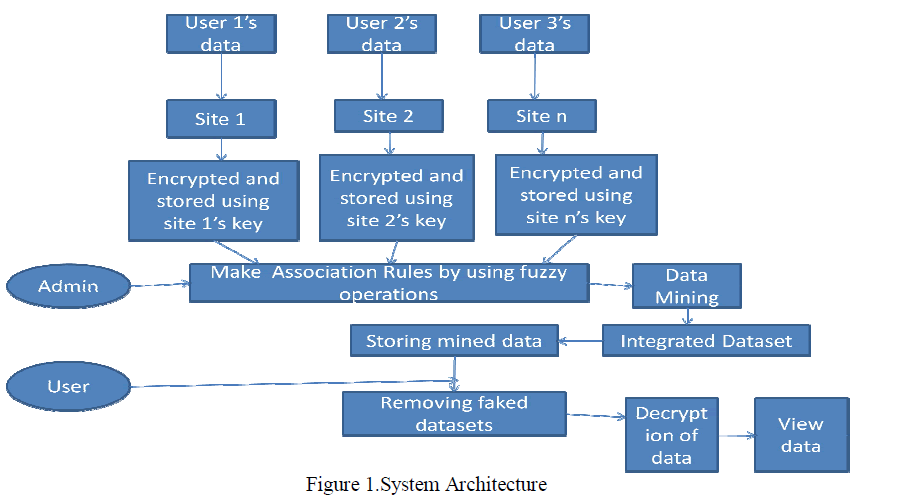 |
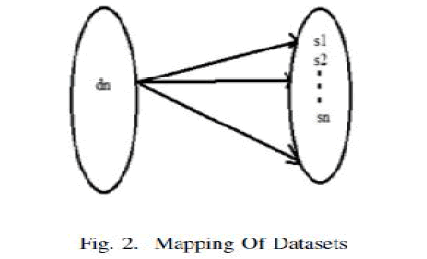 |
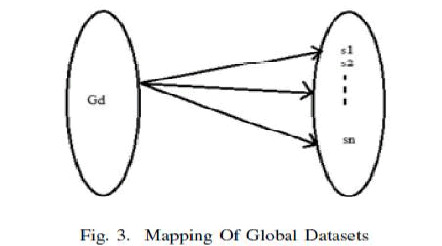 |
| Figure 1 |
Figure 2 |
Figure 3 |
|
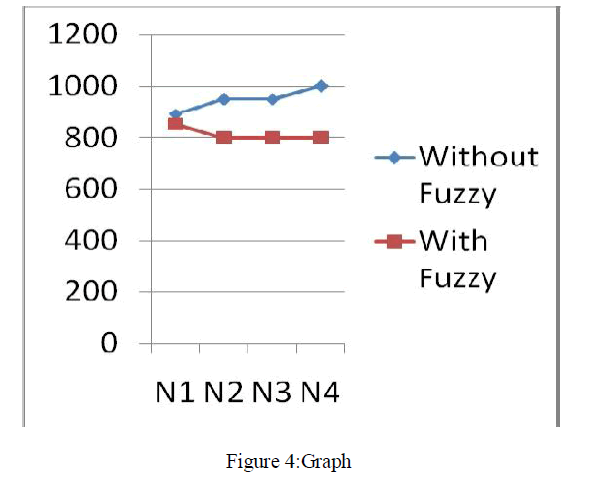 |
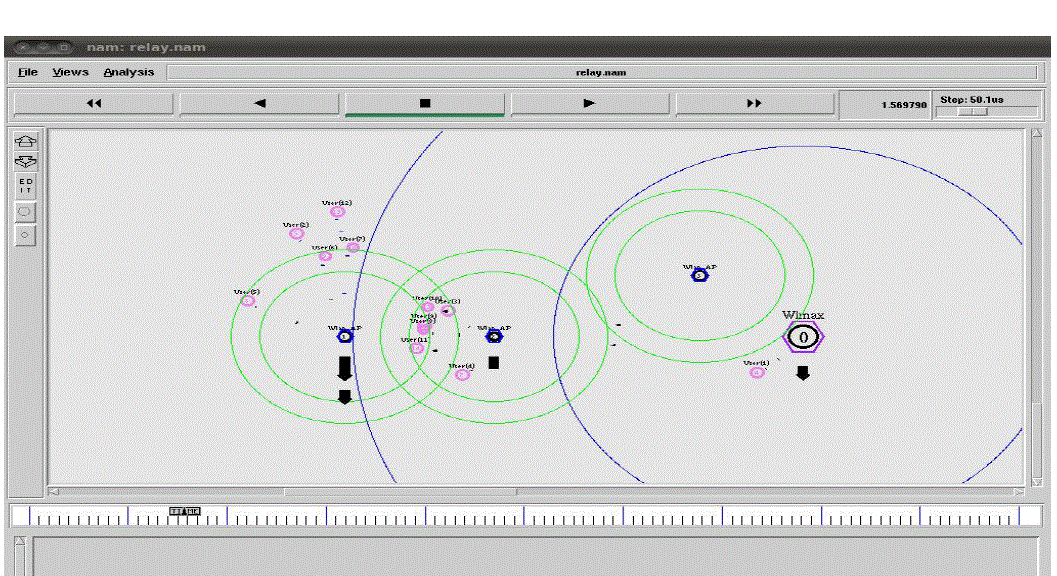 |
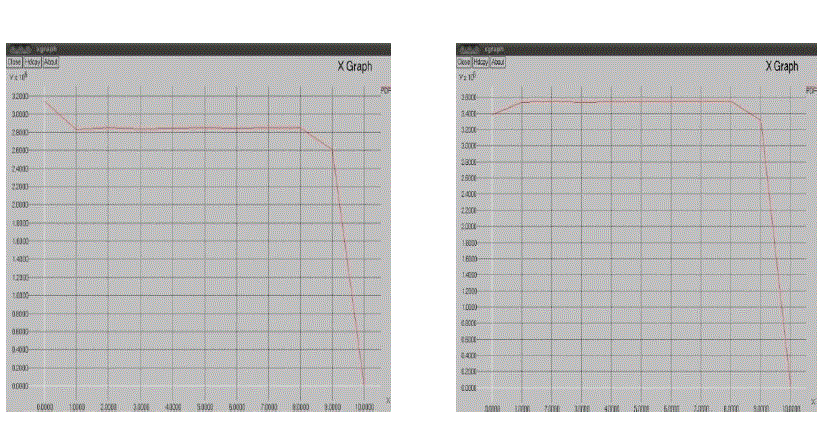 |
| Figure 4 |
Figure 5 |
Figure 6 |
|
| |
References
|
- Dong Ma, Maode Ma, “A QoS Oriented Vertical Handoff Scheme for WiMAX/WLAN Overlay Networks”, IEEE Transaction on Parallel And Distributed System,vol. 23, no. 4,pp.598-606 Apr. 2012.
- A.V. Garmonov et al., “QoS-Oriented Intersystem Handover between IEEE 802.11b and Overlay Networks,” IEEE Trans. Vehicular Technology, vol. 57, no. 2, pp. 1142-1154, Mar. 2008.
- N. Nasser, A. Hasswa, and H. Hassanein, “Handoffs in Fourth Generation Heterogeneous Networks,” IEEE Comm. Magazine, vol. 44, no. 10, pp. 96-103, Oct. 2006.
- C. Guo, Z. Guo, Q. Zhang, and W. zhu, “A Seamless and Proactive End-to-End Mobility Scheme for Roaming across Heterogeneous Wireless Networks,” IEEE J. Selected Areas Comm., vol. 22, no. 5, pp. 834-848, June 2004.
- A.B. Pontes, D.D.P. Silva, J. Jailton, O. Rodrigues, and K.L. Dias, “Handover Management in Integrated WLAN and Mobile WIMAX Networks,” IEEE Wireless Comm., vol. 15, no. 5, pp. 86-95, Oct. 2008.
- C.W. Lee, L.M. Chen, M.C. Chen, and Y.S. Sun, “A Framework of Handoffs in Wireless Overlay Networks Based on Mobile IPv6,” IEEE J. Selected Areas Comm., vol. 23, no. 11, pp. 2118-2128, Nov. 2005.
- R. Prasad, C. Dovrolis, M. Murray, and K. Claffy, “Bandwidth Estimation: Metrics, Measurement Techniques, and Tools,” IEEE Network, vol. 17, no. 6, pp. 27-35, Nov./Dec. 2003.
- W. Yang, Y. Wang, Y. Tseng, and B.P. Lin, “Energy-Efficient Network Selection with Mobility Pattern Awareness in an Integrated WiMAX and WiFi Network,” Int’l J. Comm. System, vol. 23, no. 2, pp. 213-230, Feb. 2010.
- G. Lampropoulos, N. Passas, L. Merakos, and A. Kaloxylos, “Handover Management Architectures in Integrated WLAN/ Cellular Networks,” IEEE Comm. Surveys and Tutorials, vol. 7, no. 4, pp. 30-44, Oct.-Dec. 2005.
- D.C. Plummer, “An Ethernet Address Resolution Protocol (ARP),” IETF RFC 826, Nov. 1982.
- C. Youngkyu and C. Sunghyun, “Service Charge and Energy-Aware Vertical Handoff in Integrated IEEE 802.16e/802.11 Net-works,” Proc. IEEE INFOCOM, pp. 589-597, 2007.
- W. Lee, E. Kim, J. Kim, I. Lee, and C. Lee, “Movement-Aware Vertical Handoff of WLAN and Mobile WiMAX for Seamless Ubiquitous Access,” IEEE Trans. Consumer Electronics, vol. 53, no. 4, pp. 1268-1275, Nov. 2007.
- Ravindra C. Sanap, S.S.Sambare, “An Improved QoS-Based Vertical Handoff Scheme for Next Generation of Wireless Network” International Journal of Engineering and Innovative Technology, Vol. 2, Issue 7, January 2013.
- B. G. Lee, S. Choi, Broadband Wireless Access and Local Networks: Mobile WiMAX and WiFi. Artech House, 2008.
- J. C. Chen, M. C. Jiang, and Y. W. Liu, "Wireless LAN Security and IEEE 802.11i," IEEE Wirel.Commun., vol. 12, no. 1, pp. 27-36, Feb. 2005.
- D. Chuck and J. Chang, “Bandwidth Recycling in IEEE 802.16 Networks,” IEEE Trans. Mobile Computing, vol. 9, no. 10, pp. 1451- 1464, Oct. 2010.
- E. Gustafsson and A. Jonsson, "Always best connected," IEEE Wirel. vol. 10, no. 1, pp. 49-55, Feb 2003.
- H. Zhai, Y. Kwon, and Y.G. Fang, “Performance Analysis of IEEE 802.11 MAC Protocols in Wireless LANs,” Wireless Comm. And Mobile Computing, vol. 4, no. 8, pp. 917-931, Dec. 2004
|